K | Player Pics | A-Z of Players
Personal
Fullname: James Turnbull Kennaway
aka: Joe Kennaway, James Kennaway, James T Kennaway
Born: 25 January 1907*
Died: 7 March 1969
Birthplace: Montreal (Canada)
Signed: 30 October 1931 (from New Bedford)
Left: 26 October 1939 (back to the US)
Position: Goalkeeper
Debut: Motherwell 2-2 Celtic, League, 31 Oct 1931
Internationals: Canada / Scotland
International Caps: 1 / 1
International Goals: 0 / 0
Biog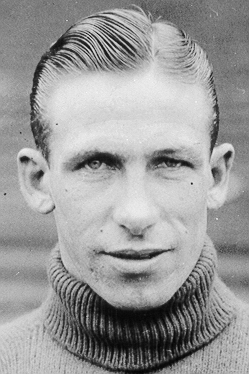
Goalkeeper Joe Kennaway signed for Celtic in 1931 following the tragic death of the legendary John Thomson.
Born in Montreal to Scottish parents Joe Kennaway played against Celtic for Fall River in the club’s American summer tour of 1931. Fall River had defeated the touring Bhoys 1-0 and Joe Kennaway had been quite superb for the hosts, making a lasting impression on Willie Maley.
Note: his real first name is actually ‘James‘ not ‘Joe‘, but for some reason he has always been called ‘Joe‘ all his life.
Willie Maley needed a top quality long term replacement for the great Thomson and with the unlucky John Falconer struggling with a knee injury the manager turned his attention to Joe Kennaway. He signed for the Bhoys on 30th October 1931 and made his debut the next day in a 2-2 league draw at Motherwell on Halloween (only a day after arriving off the boat from the US). He was then a stalwart for the side through the decade.
It was to prove an astute signing by manager Willie Maley. Joe Kennaway was a solid and dependable keeper with excellent handling skills and ample courage. He certainly revelled in the physical battles he endured with the robust forwards of the day. He may not have been as agile or as graceful as John Thomson but few, if any, ever were. His reflexes were lightening quick though and he earned a reputation as being an excellent penalty saver. He grew to a be a noted expert in the art of stopping penalty kicks, something that always comes in handy.
Some great achievements over the time with Joe Kennaway in goal, included winning the League title in the 1934-35 season and again in 1937-38, aided by the return of Jimmy McMenemy (as assistant manager) who shored up the club after the increasing lack of attention as the supposed manager.
He won a Scottish Cup winners medal when Celtic beat Aberdeen 2-1 on 24 April 1937 in the incredible match which saw an attendance of 146,433.
Possibly Joe Kennaway’s finest moment as a Celt came in the Empire Exhibition Trophy in 1938 when he conceded just a single goal in four games as Celtic won the tournament to be crowned the unofficial champions of Britain. As the Glasgow Herald commented:
“Kennaway, whose play had considerable bearing on Celtic’s progress to the final, had another grand match”.
In truth, it wasn’t easy days, as his records show that goals were regularly conceded throughout his time at Celtic, although this can be attributed as much to the declining form of the entire side. Possibly the nadir was being in goal for the humiliating 8-0 record defeat to Motherwell away in April 1937; Celtic conceded `14 goals to Motherwell in three games that season! Motherwell were a good side that season finishing fourth in the league table just one point behind Celtic.
In total, Joe Kennaway made 295 league & Scottish Cup appearances for Celtic and won two league titles, two Scottish Cups and the Empire Exhibition Trophy. A fine record, but that tally could have been greater, but Celtic were beginning to slide and the old hegemony was long ended.
He eventually departed Parkhead in October 1939 and returned to Canada (leaving war-time Europe), and later moved to the US where he later coached the Brown University soccer team from 1946 to 1959.
As Joe Kennaway’s career spanned practically the whole decade, his name for Celtic fans has become synonymous with the 1930s. It took a few years until Willie Miller arrived at Celtic before Celtic finally had adequately replaced Joe Kennaway in goals. Some of the following incumbents had really poor records.
Joe Kennaway is credited as having been capped for his native Canada and Scotland, and he would have played more times for Scotland, if the other British nations had not objected to a Canadian playing in goal for Scotland.
What is undeniable is the fact that Joe Kennaway was an excellent keeper and a fine Celt, and fitted in very well in difficult circumstances. The club was slowly entering a decline but he was one of those who helped prop the First Team up, and collected some well deserved medals along the way.
Joe Kennaway sadly passed away in 1969 after a sudden heart-attack. He is buried in Highland Memorial Park, in Rhode Island USA.
Playing Career
| APPEARANCES | LEAGUE | SCOTTISH CUP | LEAGUE CUP | EUROPE | TOTAL |
| 1931-39 | 263 | 32 | n/a | n/a | 295 |
| Shut-outs: | 75 | 8 | – | – | 83 (28%) |
Honours with Celtic
Empire Exhibition Cup
Scottish League
Scottish Cup
Pictures
Forums
Notes
- Date of Birth confirmed as 25 January 1907, confirmed via investigation on CGS forum, correction from 1905 as is stated in certain resources.
- Some say that he may actually have played for the US national team, but there is doubt on that front, and the record books seem to shun that this ever happened. So the point is deemed as untrue.
Articles
Medals for Sale (2013)
The Medals and Awards of the goalkeeper James ‘Joe’ Kennaway, who played 311 games for Celtic FC between 1931 and 1939:
http://www.dnw.co.uk/auctions/catalogue/lot.php?auction_id=300&lot_id=437
Province of Quebec Football Association, 1926 Charity Cup, an openwork gold badge by Mappin & Webb, football set in lozenge, back named (C.P.R.F.C., J. Kennaway), 39 x 35mm, 10ct, 7.29g;
Montreal League Championship, P.O.F.A., a gold and enamel badge by Birks, legend on Garter, football above, back named (C.P.R. A.A.A., J. Kennaway, 1927), 28mm, 10ct, 9.70g;
American Soccer Association 1929, a gold and enamel badge, unsigned, crossed flags above football, back named (Winners 1928-29, Providence A.F.C., J. Kenneway (sic)), North American hallmarks, 32 x 26mm, 10ct, 8.56g;
Scottish Football Association, an openwork gold and enamel badge by Fattorini, thistle above lion rampant, back named (Scottish Cup 1932-33 Won by Celtic F.C., J. Kennaway), hallmarked Birmingham 1932, 43 x 32mm, 14ct, 13.22g;
Scottish League Champions 1937-38, a gold award medal by Fattorini, shield with saltire, rev. wreath, named (Won by James Kennaway, Celtic F.C.), hallmarked Birmingham 1938, 32mm, 9ct, 20.67g;
The Glasgow Football Association, a gold award medal by Fattorini, arms and supporters, back named (Won by Celtic F.C., J. Kennaway, 1938-39), hallmarked Birmingham 1938, 28mm, 9ct, 17.63g [6].
Very fine and better, a very rare and poignant group of both Scottish and Canadian interest; all with clips and rings for suspension £2,000-4,000
Footnote
James ‘Joe’ Kennaway (1905-69) was born in Point St Charles, Montreal, to a family who had migrated from Dundee. His goalkeeping prowess at the Montreal C.P.R. team in the early 1920s brought him to the attention of Canadian scouts and he was capped to play for Canada against the USA at Ebbets Field, Brooklyn in 1926. In 1927 he signed for Providence, RI, who competed in the American Soccer League. The Providence team changed ownership and moved their base to Fall River, MA, and faced a touring Celtic team on 31 May 1931. Kennaway’s performance in that game led to him being signed by Celtic manager Willie Maley to replace the late John Thomson, who fractured his skull at Ibrox Park in the Rangers v Celtic game on 5 September 1931 and died later that day from his injuries. Kennaway made his debut for Celtic at the age of 26 in their 2-2 away draw at Fir Park, Motherwell on 31 October 1931, a day after disembarking from the transatlantic liner Duchess of Richmond. Between then and the home fixture against Clyde on 2 September 1939, Kennaway made 311 appearances for his club in all competitions and, in the days when country swapping for footballers was a common occurrence, he was capped for Scotland against Austria in their 2-2 draw at Hampden Park on 29 November 1933. Earlier that year he won his first Scottish Cup winners medal when Celtic beat Motherwell 1-0 and the Glasgow Herald reported that “Kennaway alone kept Motherwell from scoring”. He won a second such medal when Celtic vanquished Aberdeen 2-1 on 24 April 1937 at Hampden Park, watched by no less than 147,365 people, believed to be the third largest attendance ever at a football match in the British Isles, with a further 20,000 people locked outside the gates. Celtic, with Kennaway in goal, won the Scottish league championship in 1934-5 and 1937-8, and also won the Empire Exhibition Cup in 1938 against teams from Rangers, Aberdeen, Heart of Midlothian, Sunderland, Brentford, Chelsea and Everton.
On the outbreak of War Kennaway returned to Canada. He coached the Brown University soccer team at Providence, RI, from 1946-59, becoming an American citizen in 1948
Joe Kennaway Montreal’s World Class Goalkeeper
http://www.soccerreportextra.com/domestic/scottish-leagues/celtic/joe-kennaway-montreal%E2%80%99s-world-class-goalkeeper/
Written by Colin Jose on October 12, 2010 | 3 Comments »
Posted in Celtic, History and Books
It was Saturday, September 5, 1931 and a crowd of 75,000 fans jammed the stands and terracing of Glasgow’s Ibrox Stadium to watch the traditional clash between Rangers and Celtic.
Just five minutes into the second half Rangers attacked down the right wing, the ball was worked in to the centre and just as Rangers centre forward Sam English was in the motion of shooting, John Thomson, Celtic’s Scottish international goalkeeper, threw himself at his feet.
Both players went down, the ball spun away. English got up and bent over Thomson, but Thomson did not get up, and instantly it seemed that the players on both sides realized that Thomson had been seriously injured.
A hush fell over the crowd as Thomson was carried off. Later that night Thomson died in a Glasgow Infirmary of what the Glasgow Herald described as a “depressed fracture of the skull.” He was just 23 years old.
Four days later John Thomson was buried in his hometown of Cardenden in Fife. Two special trains carried mourners from Glasgow. A crowd estimated at between 30,000 and 40,000 attended the funeral.
Two months after the tragic death of John Thomson a young Canadian arrived in Glasgow, it was Friday October 30 and he had just stepped off the liner Duchess of Richmond from Montreal.
His task was to fill the void in the Celtic goal, his name was Joe Kennaway.
One day later, with hardly enough time to be introduced to his team mates, he ran out at Fir Park in Motherwell with the rest of the Celtic team for the Scottish First Division encounter between the two teams.
Joe Kennaway – Celtic, Canada and Scotland
The following day the Glasgow Sunday Post headline read “Kennaway Has Come to Stay.” The Post commented “Kennaway’s style of taking high shots took the breath away from one at times.”
James (Joe) Kennaway was born in Point St. Charles, Montreal on January 25, 1905, one of a family of four. His father and mother had migrated to Canada from Dundee and all their children were born in Canada.
His goalkeeping prowess first attracted attention when he was playing for the old Montreal C.P.R. team during the early 1920s, and while he was with them he made his one and only appearance for Canada against the United States at Ebbets Field in Brooklyn in 1926.
One year later he was signed by the Providence, Rhode Island club playing in the professional American Soccer League. He stayed with them until February 1931 when the Providence team was moved to Fall River, Massachusetts.
In those days it was customary for at least one British team to tour Canada and the United States during the summer. In 1931 it was the turn of Glasgow Celtic and when they faced Fall River on May 31, Joe Kennaway was in goal for the Massachusetts team, and his performance on that day led indirectly to his signing for Celtic.
As you might expect Kennaway took a while to settle down in Glasgow, but soon made the Celtic goalkeeping job his own. In 1933 he won his first honours in Scottish football winning a cup winners medal as Celtic beat Motherwell 1-0 before 102,339 at Hampden Park in Glasgow. The Glasgow Herald commented. “Kennaway alone kept Motherwell from scoring.”
His work quickly won him selection for the Scottish national team and played against the great Austrian “Wunderteam” at Hampden Park on November 29, 1933. The game ended in a 2-2 tie.
But it was to be Kennaway’s only appearance for the full Scottish national team as the other British nations objected to a Canadian playing in goal for Scotland. Still he did play four times for the Scottish League team, first against the Irish league in 1932 and then two games against the Football League team of England in 1934 followed by another game against the Irish League in the same year.
Celtic, with Kennaway in goal, won the Scottish League championship in the 1934-35 season and repeated in 1937-38. He also won a second Scottish Cup winners medal when Celtic beat Aberdeen 2-1 on April 24, 1937 at Hampden Park. The attendance on that day was an unbelievable 146,433.
But perhaps his finest hour came in the Empire Exhibition Cup of 1938. With the competition being held in Glasgow, the competition involved Celtic, Rangers, Aberdeen and Hearts from Scotland and Sunderland, Brentford, Chelsea and Everton from England.
Of the game against Sunderland one paper said “Celtic can thank their lucky stars and Joe Kennaway that they have a second chance tonight. Only the brilliance of Kennaway, who had half a dozen miraculous saves prevented an English success to mark the opening of the tourney.” Celtic eventually won the tournament beating Everton in the final before 82,000 at Ibrox Park.
When the first inductees into the new Soccer Hall of Fame and Museum were named in 2000, Joe Kennaway, as befitting one of Canada’s finest athletes, headed the list of the first 22 an honour and recognition long overdue.
Kennaway a Celtic hero in Scotland
http://www.canadasoccer.com/kennaway-a-celtic-hero-in-scotland-p150691
Posted on 26 May 2012 in Canadian soccer history
In 1928, newspaper men raved about a young Montréal goalkeeper named Joe Kennaway. The Montréal CPR star of the 1928 Charity Cup match at Stade Molson, it was written that “in that game alone Kennaway proved himself one of the finest Canadian players of all time.”
From that 1:0 victory and clean sheet in the Charity Cup match, Kennaway launched a professional career that started in eastern USA, but then prospered for eight seasons in Scotland with renowned Glasgow club Celtic. He won two Scottish League titles and two Scottish Cups from 1931 to 1939, only returning home to Canada after the outbreak of the Second World War.
How Kennaway came to play in Celtic was the result of another typical strong performance in 1931 against his future team. Now with Fall River FC in the American Soccer League, Kennaway was the difference in a 1:0 victory over touring Celtic in North Tiverton, RI. Just over three months later after goalkeeper John Thomson was fatally injured in a match, Celtic called for the Canadian to serve as Thomson’s replacement.
In James Handley’s The Celtic Story, it was written that manager “Willie Maley remembered the lively display that Joe Kennaway of Fall River Football Club had given in the recent American tour and invited him over. On 31 October Kennaway made his first appearance in Celtic’s goal in a match against Motherwell and soon proved that the performance he had put up against the celebrated visitors had been no mere flash in the pan.”
Over eight seasons, Kennaway made 295 appearances for Celtic, winning the Scottish League title in 1935-36 and 1937-38, as well as Scottish Cup titles in 1933 and 1937. In his first Scottish Cup final on 15 April 1933 against Motherwell, he posted a clean sheet at Hampden Park in front of 102,000 fans in attendance.
In 1935-36, Kennaway and Celtic tied a franchise record by posting 32 wins in a 38-match season. The team’s record was an impenetrable 32-2-4. So outstanding was Kennaway that he was one of two Celtic players featured in the “Popular Footballers” picture card set of 1936 United Kingdom footballers (produced by Carreras Limited).
In 1937, Kennaway second Scottish Cup followed a 2:1 victory over Aberdeen in the final. The following season, it was back to the top of the Scottish League standings, posting a record of 27 wins, seven draws and four loses.
He soon took over as soccer coach at Brown University, a position he held from 1946 to 1959. After passing away in 1969, he was posthumously honoured by both the New England Soccer Hall of Fame (1997) and The Soccer Hall of Fame in Canada (inaugural class in 2000).
Many thanks to Football historian Colin Jose for the information below, Mr Jose has been a great help to the Celtic Wiki in the past and his continued input is greatly appreciated.
When Joe left Scotland in 1939 he did not go back to the United States, he went back to Canada, home to Montreal.There he coached (and maybe played) a team in the Montreal and District League named WINGS.
I don’t have the record of this team, but have always intended to check it out and the length of time it operated.If you have micro film of the Montreal Gazette or the Montreal Star, in Glasgow, you can verify what I am saying.
Also Joe was inducted into the New England Soccer Hall of Fame in 1997, after his death of course.I was a guest at the ceremony held in the Portuguese Club in Cranston, Rhode Island.
Also a guest was Joe’s son Grant, and other members of his family.I was asked to speak and spoke about Joe’s career.Interesting enough, also inducted at the same time was Bert Patenaude (also deceased) who played for the United States at the World Cup of 1950.
You can find the New England Soccer Hall of Fame on line.
With Best Wishes,Colin Jose
Joe Kennaway is buried in Highland Memorial Park, in Rhode Island USA (Plot 24, Grave 1).


New Info on goalkeeper Joe Kennaway’s life after Celtic
By Editor 16 May, 2020
I am writing from the State of Maine, USA. I read with great interest David Potter’s recent article on Joe Kennaway, the former Celtic goalkeeper. I had the good fortune during my undergraduate years at Brown University in Providence, Rhode Island to play for Joe, who was Brown’s part-time soccer coach from 1946-1959.
You acknowledge that little is known of Joe’s post-Celtic career. The following information might help fill-in some of the gaps for the Celtic support.
After WWII, Joe returned to the US and settled in Providence, Rhode Island, his wife Loretta’s home town. He was employed by Brown and Sharpe, the famous Providence machine tool builders firm.
Joe became a U.S. citizen in 1948. He was inducted into the inaugural class of the Canadian Soccer Hall of Fame in 2000. As you most likely know, he was one of the rare international soccer players who had caps for two national teams — the Canadians (against the US. in Brooklyn in 1926) and Scotland (against Austria at Hampden Park in 1933).
Joe died in Johnston, Rhode Island on 7 March 1969, regrettably to little notice here in the US and even in Canada.
One of the highlights of the Kennaway era at Brown was the annual invite to the varsity players to his favorite pub in Central Falls, Rhode Island. He brought his huge scrapbook from his Celtic playing days and regaled us with stories of his celebrated career. We were all spellbound and enjoyed interacting with his drinking buddies.
Thank you so very much for writing this very informative article on Joe’s storied career with the Celtic. For your interest, I am attaching a 2018 posting by Frank Dell’ Apa on the Fall River FC’s 1-nil victory over the Celtic in May of 1931.
P.S. On a personal note, I scored the lone goal in the last victory of Joe’s coaching career — a shot off the right post in the waning minutes of the match at Cornell University in the fall of 1959.
Howard R Whitcomb

Celtic in the Thirties: Unpublished works of David Potter – Joe Kennaway
Celtic in the Thirties: Unpublished works of David Potter – Joe Kennaway
By Editor 17 December, 2024 No Comments
Celtic in the Thirties by Matt Corr
Celtic in the Thirties by Matt Corr, Volumes One & Two, Published by Celtic Star Books, November 2024. Image The Celtic Star
Facebook
WhatsApp
Twitter
Reddit
Email
Share
Tonight we resume our series on The Celtic Star where we post unpublished works of David Potter dealing with Celtic players from the 1930s…
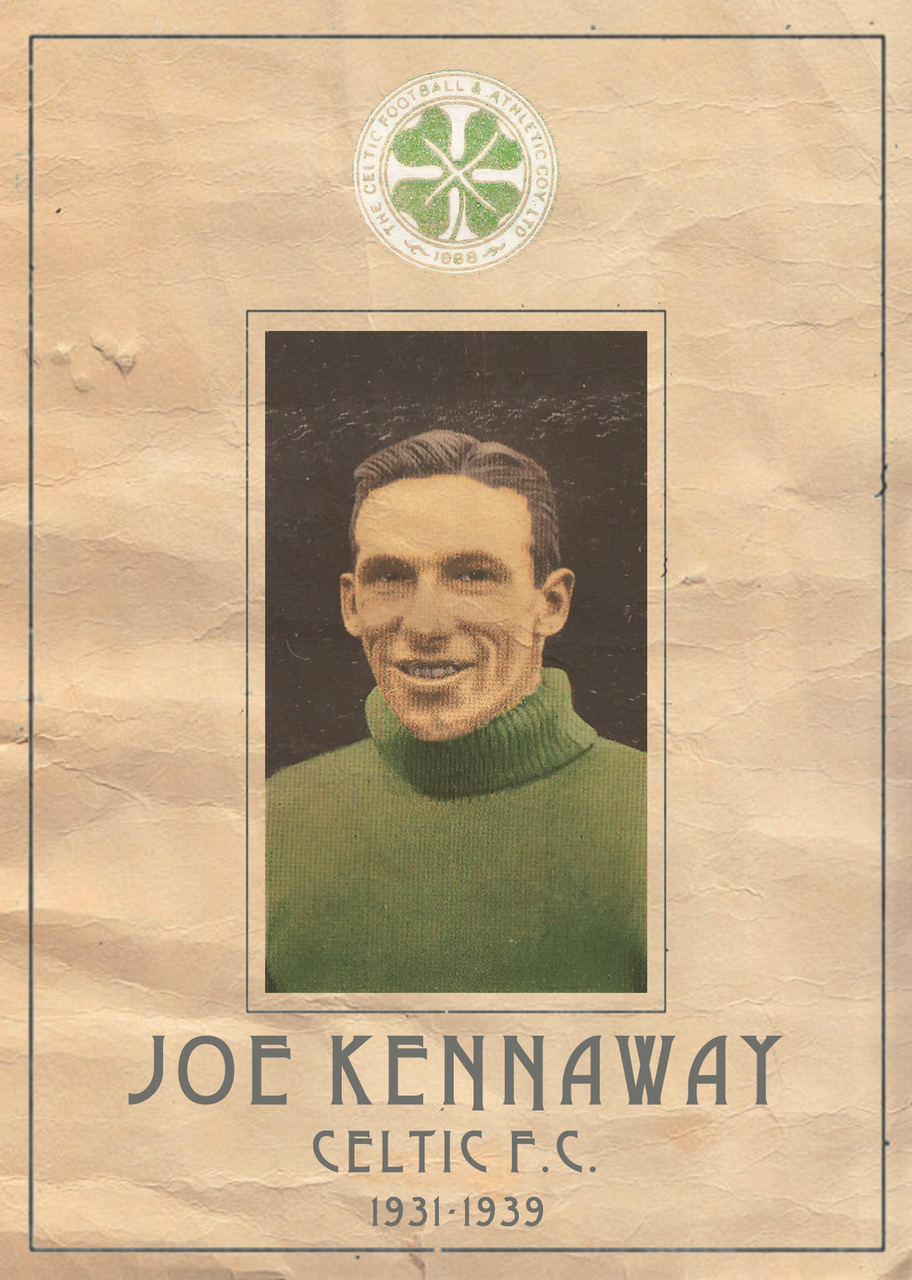
Celtic in the Thirties – Unpublished works of David Potter – Joe Kennaway. image by Celtic Curio for Celtic in the Thirties by Matt Corr out now at celticstarbooks.com
Name: JOE KENNAWAY
Born: January 25 1907
Died: March 7 1969
Appearances: 295
Shut Outs: 83
Scottish League medals: 1935/36, 1937/38
Scottish Cup medals: 1932/33, 1936/37
Glasgow Cup medals: 1938/39
Glasgow Charity Cup medals: 1935/36, 1936/37, 1937/38
Scotland Caps: 1
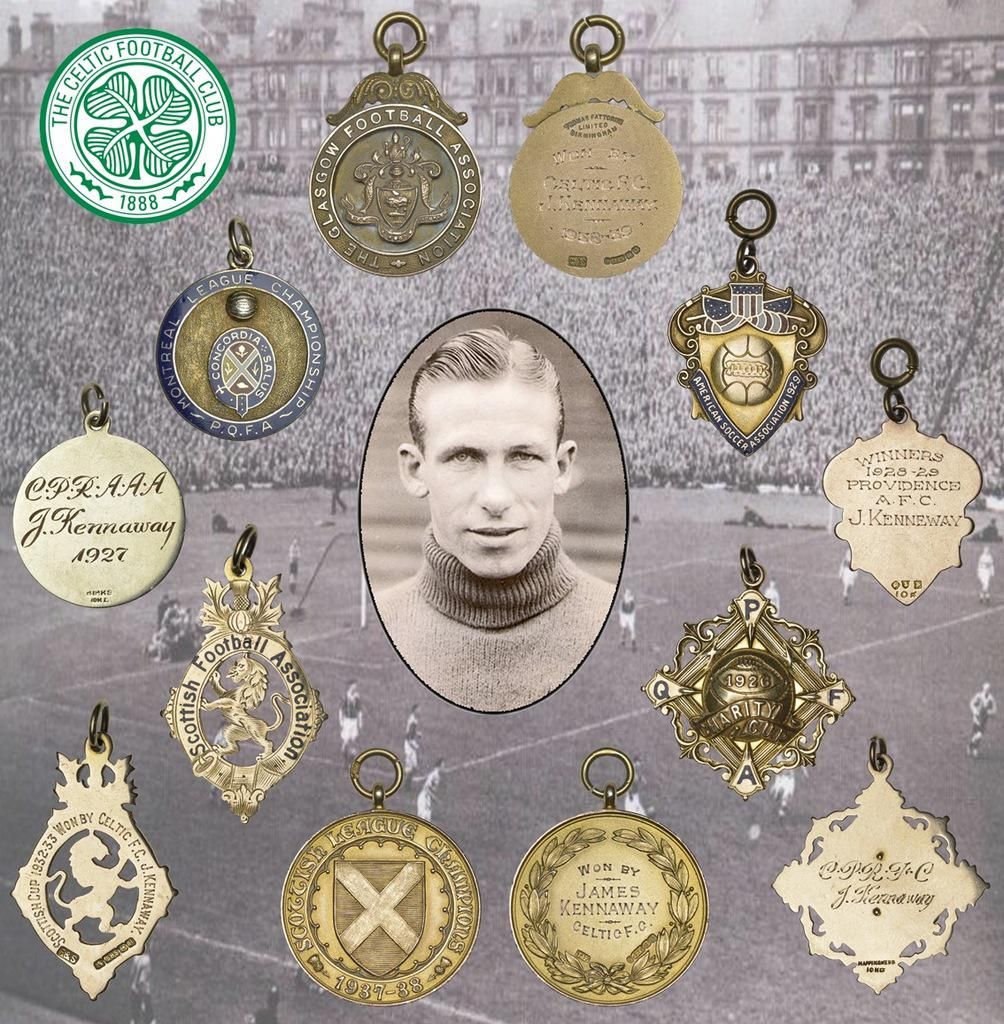
Joe Kennaway, Celtic FC. Image The Celtic Wiki
He was more or less Scottish anyway. He was born on Burns day 1907, and was actually named James Kennaway, although he preferred Joe. His parents were from Dundee and he grew up in Canada fascinated by the Scottish game of football. Lithe and agile, he soon became a goalkeeper and the first time he ever came to the attention of Celtic was on the tour of the New World in 1931 when he played a great part in Falls River defeating Celtic 1-0.
He was probably hankering after a professional career in Scotland anyway, and talked at length to the genial and charming John Thomson, and even Willie Maley was impressed, telling everyone how good Kennaway was and promising to let him know if any Scottish team like Dundee or Motherwell for example was in need of a goalkeeper.
No-one could possibly have guessed how in the most awful of circumstances it was Celtic themselves who would be needing a goalkeeper. After a few dabblings with other goalkeepers who clearly could not cope with the emotional side of taking over from John Thomson, Kennaway was sent for. Recently married, Kennaway did not seem to take a huge amount of persuasion and made his debut at Fir Park on October 31 1931 in an honourable 2-2 draw against Motherwell, who would in fact win the League that year.
Kennaway injured himself in that game. It was possibly a blessing in disguise for it allowed him time to adjust to Scotland and Glasgow – a difficult task at the best of times – and in the circumstances of late 1931, almost impossible.
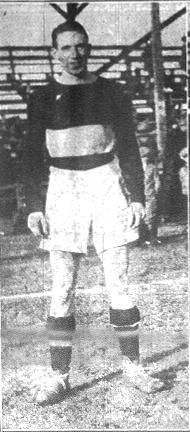
Joe Kennaway, Celtic FC. Image The Celtic Wiki
Not surprisingly, the team did not do well in 1931/32 but Kennaway impressed. Reports of “clean clutching”, willingness to come out and punch a ball away and some great shot-stopping are frequent, but what was more important than anything else was the calmness and reassurance that he brought to a defence, which was full of competent players like Bobby Hogg and Peter McGonagle but who possibly lacked the sheer class of the likes of Eck McNair or Willie McStay of previous years.
1932/33 saw an important success in the Scottish Cup. It was Kennaway’s first medal for the club, and in an undistinguished final on a dull day, he was one of the few real stars of the team. Motherwell had a fine team, but McGrory got the only goal of the game and Kennaway had one superb save from George Stevenson, which he would later rate as the best in his career.
But successes for Celtic were few and far between at about this time. Kennaway however was chosen to play for Scotland. This was of course allowed because his father Charlie was from Dundee, even though Joe had already played an International match for Canada. He would have played for Wales in October 1933 but staved his finger and had to withdraw, but he did play in a 2-2 draw against Austria.
This was his only Scotland cap. There were those who saw some anti-Celtic bias here, but what seems to have happened was that the other Home countries objected to a Canadian playing for Scotland. In any case, there were plenty other good Scottish goalkeepers around in Jakey Jackson of Chelsea and Jerry Dawson of Rangers.
To his credit, Joe kept his feelings to himself about all this, and if course it simply does not do, if one is a member of the goalkeepers’ union (as Joe was) to criticise one’s colleagues. Naturally sociable, Joe was one of these goalkeepers who was always seemed to have a long chat with his opposite number on the field and as they walked off at the end, sympathising with each other about missed crosses, the odd fumble and annoying shots that sneaked in at the far or near post.
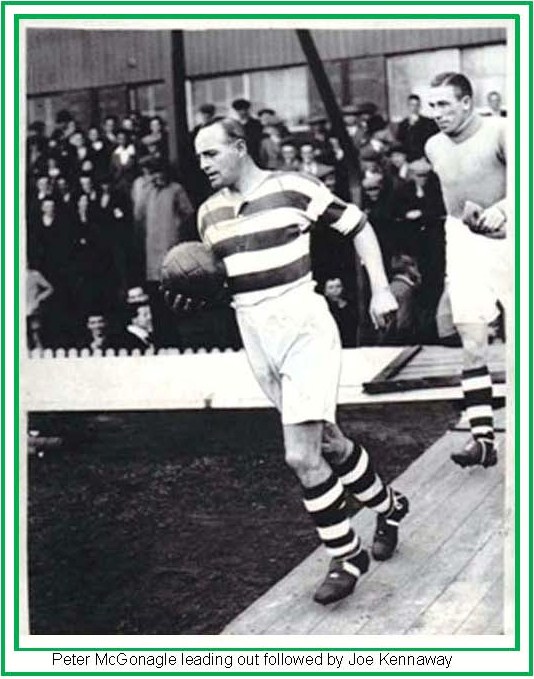
But after 1935, Joe and Celtic really began to take off, as the long overdue Celtic revival began to pick up speed. An instant Anglo-Canadian partnership sprung up when Willie Lyon appeared at the start of the 1935/36 season and this season saw a total of 20 clean sheets as Celtic won the Scottish League, with the Glasgow Charity Cup as the icing on the cake.
The following year saw the Joe’s second Scottish Cup medal when in front of a record crowd, Celtic beat Aberdeen 2-1. It was a close game and might well have gone the other way but for good goalkeeping and defending from Celtic.
Once again, the Glasgow Charity Cup was an added bonus, this time in a tight game against Queen’s Park, but it was in the next year’s Glasgow Charity Cup final against Rangers on May 14 1938 that Kennaway proved his worth. Celtic won easily but might not have done so had Kennaway not, at a crucial point, saved a penalty kick.
But that was only practice, as it were, for his two games against Sunderland in the Empire Exhibition Trophy. In both the first game and the replay at Ibrox, Celtic were badly reduced by injuries thanks to a brutally determined Sunderland team (Raich Carter and all), but repeatedly Joe Kennaway saved the day with his ability to tip balls over the bar and round the posts, and no little courage in his determination to dive at the feet of opponents, something that made those supporters with long memories cringe, remembering what had happened to his predecessor less than seven years ago at the same ground.
As the League had been won that year as well, Joe had every reason to be pleased with himself that year when the Empire Exhibition Trophy was presented to Willie Lyon that night of June10, and then he was proud to attend the Golden Jubilee Dinner a few years later.
The following year, as if everyone knew what was going to happen, was not so good, although Joe completed his set of medals by winning the Glasgow Cup. The war that had been threatened for so long, arrived in September 1939, and Joe now suffering from rheumatoid arthritis decided to call time on his Scottish footballing career and to return home.
He remained however in football, and always had happy memories of his days with Celtic, making a point of meeting them when they came on tour in 1951. He came back to Scotland in 1965 for a visit, but died suddenly in March 1969 at the comparatively young age of 62.
David Potter